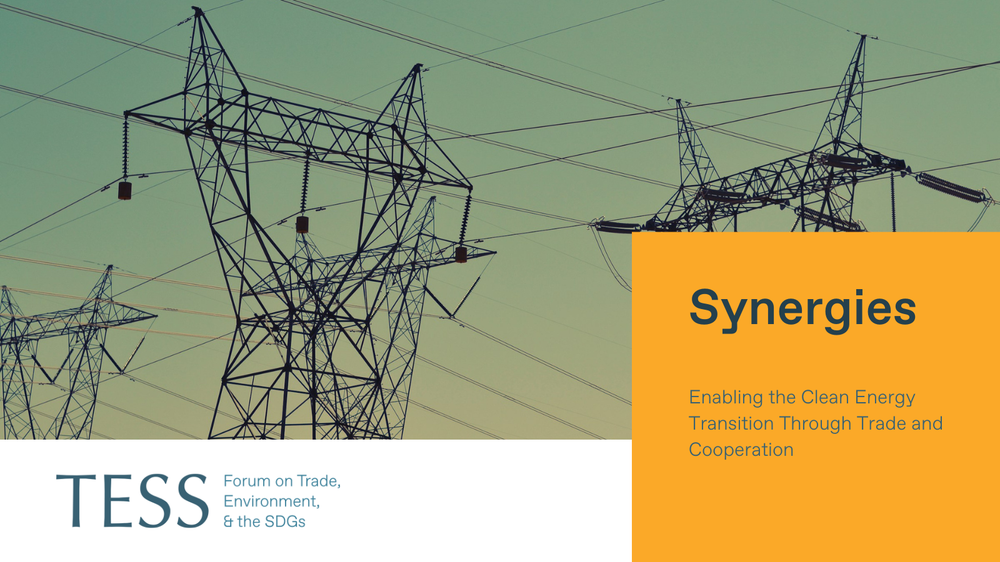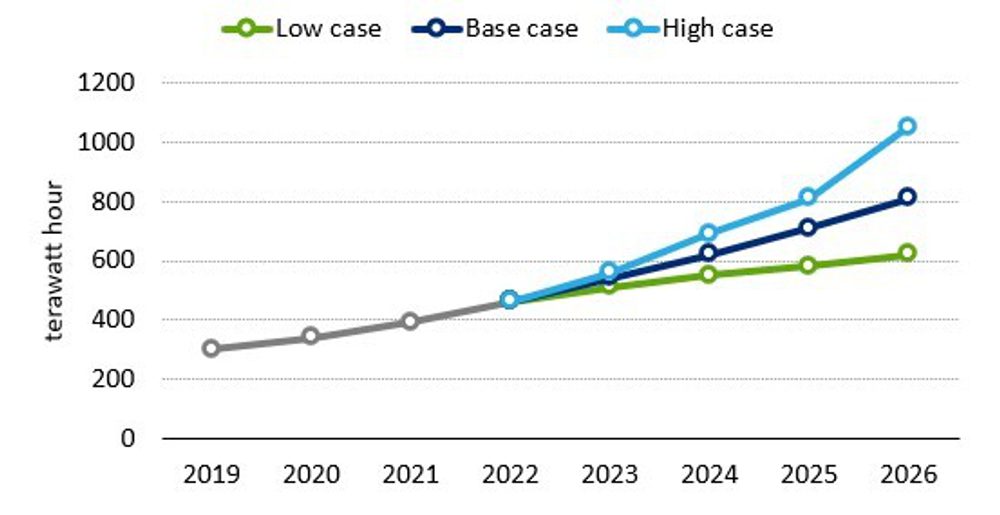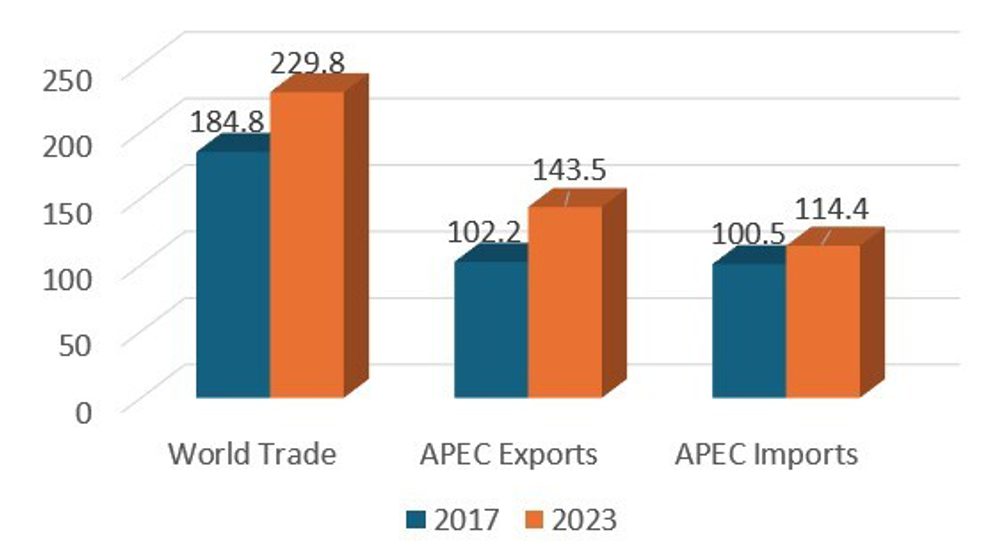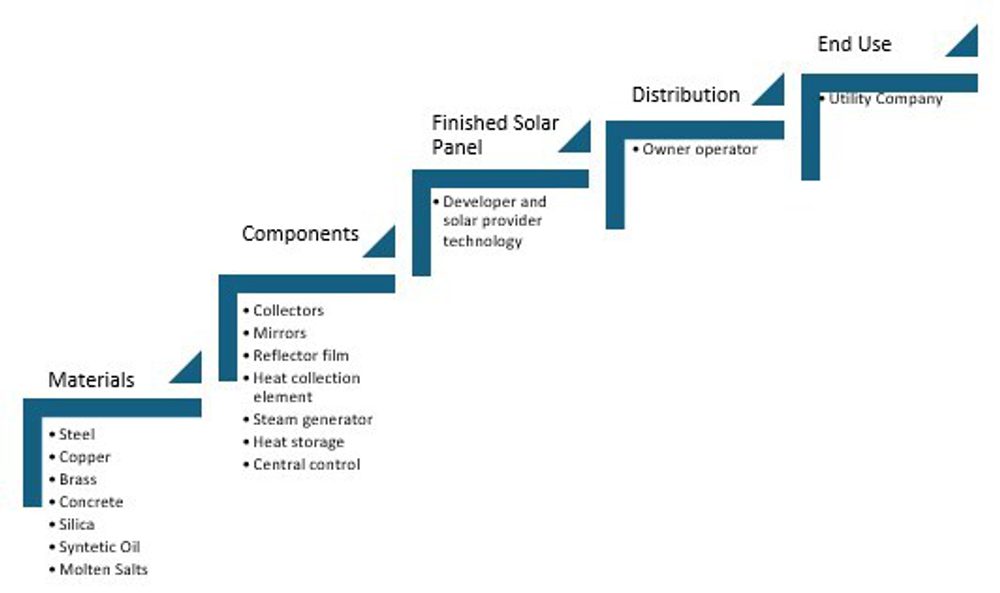Renewable energy and new technologies are breaking the old trade-off between economic growth and environmental protection. But to scale the transition towards a cleaner environment, trade policies must help expand access to clean technologies and energy-efficient goods.
This article is part of a Synergies series on climate and trade curated by TESS titled Addressing the Climate Crisis and Supporting Climate-Resilient Development: Where Can the Trading System Contribute? Any views and opinions expressed are those of the author(s) and do not necessarily reflect those of TESS or any of its partner organizations or funders.
-----

One of the longest-running debates in economic policy has centred on whether economic growth must come at the environment’s expense. This narrative is starting to change. The rise of renewable energy and cutting-edge technologies is reshaping how we think about prosperity and sustainability.
The world is changing and becoming increasingly digital. The digital economy is embedded in our daily activities. Individuals and firms make money doing business through the internet, we talk to friends through apps, many of us do work and study with laptops, smart phones offer several alternatives to order food or get a taxi.
This transformation has an energy cost. Data centres, artificial intelligence (AI) applications and cryptocurrencies are all electricity-intensive, and their footprint is growing fast. The International Energy Agency expects that the global demand for electricity from digital activities will nearly double between 2022 and 2026, adding pressure to energy systems and underlining the need to scale up renewable resources. At the same time, technology companies must do their part by investing in greater energy efficiency across their operations.
Figure 1. Global Electricity Demand From Data Centres, AI, and Cryptocurrencies

Source: International Energy Agency (2024).
As the demand for electricity increases, achieving sustainability will require a more balanced energy mix—one in which renewables play a far greater role. This shift will also deliver broader benefits, particularly for sectors with a large carbon footprint.
Transport is the second-largest contributor to global greenhouse gas emissions after electricity generation. Electric vehicles are becoming more visible in cities in the world, producing lower emissions than traditional combustion vehicles. But their sustainability gains are limited if the electricity that powers them continues to come from fossil fuel–based sources.
Trade Policy: A Tool to Promote Clean Energy
Certainly, promoting clean energy sources through trade is the right step forward. Within the Asia-Pacific Economic Cooperation (APEC) forum, a key initiative has been the APEC List of Environmental Goods, which reduced tariffs to 5% or less on 54 environmental goods. Of these, 15 are directly related to the generation of renewable energy, including those from wind, solar, biomass and geothermal sources.
The importance of renewable energy products in the APEC List of Environmental Goods is significant. Whilst those 15 goods represent 27.8% of the goods in the list, they account for around 48% of the APEC exports and 43% of the APEC imports from that list. Also, at the global level, their trade has grown significantly in recent years, reaching $229.8 billion in 2023.
Figure 2. Trade of Renewable Energy Products in APEC List of Environmental Goods ($bn)

Source: World Integrated Trade Solution.
Although reducing tariffs has improved accessibility of products to generate renewable energy, these products are still facing barriers to trade, as there is still a lot of work that needs to be done to eliminate non-tariff measures affecting trade negatively. Export and import formalities as well as quantitative restrictions affect their trade. Similarly, technical regulations could sometimes go beyond what is required to ensure safety and become a trade restriction.
Promoting goods that support renewable energy generation requires concerted efforts to eliminate both tariffs and non-tariff barriers. Some recent free trade agreements are making progress on the matter. For example, the agreement between New Zealand and the United Kingdom includes commitments to improve market access for 293 environmental goods. By clearly listing these products as environmental goods, the parties involved aim to build momentum for broader trade liberalization in this area, particularly within plurilateral and multilateral negotiations. This approach helps frame environmental goods as a priority for liberalization, paving the way for faster implementation, focused cooperation, and eventual global alignment on trade and sustainability goals.
Similarly, two APEC member economies, Singapore and Australia, have concluded the world’s first green economy agreement, designed to promote economic growth while reducing emissions. The agreement covers 372 environmental goods and includes commitments to address their tariffs and non-tariff measures.
A Value Chain Approach to Support Clean Energy
Beyond reducing tariffs on environmental goods per se, any initiative could have a greater impact if it follows a global value chain approach, in which parts and components could also enjoy preferential treatment in markets, helping to reduce the cost of the final environmental goods.
The inclusion of “dual use” goods in environmental trade initiatives has sparked some debate, given that these products—such as pipes and pumps—can serve both environmentally-friendly purposes like water management and less sustainable ones, such as in the oil industry. Despite these concerns, extending preferential treatment to dual use goods remains a pragmatic approach. Their use in environmentally harmful activities can be more effectively discouraged through measures like targeted taxes or the removal of subsidies, rather than excluding them entirely from environmental trade initiatives.
Many products used to generate renewable energy are highly complex and require thousands of parts and components. For instance, a wind turbine requires at least 8,000 different parts and components. Likewise, the solar industry relies on an intricate value chain to deliver solar panels that generate electricity for end users. Non-tariff measures such as local content requirements, trade remedies, and export or import restrictions, among others, can negatively affect wind turbine and solar panel producers by targeting not only the final products, but also their many underlying parts and components.
Figure 3. A Simplified Global Value Chain of the Solar Energy

Source: Adapted from Gereffi and Dubay (2008).
Delivering solar power to end users is not just about assembling parts and components, but also relying on specialized services providers. However, domestic regulations can limit or even block competitive foreign firms from participating in these services sectors, hindering innovation and reducing efficiency in solar energy deployment.
To unlock the potential of clean energy, governments should explore ways to streamline and support the operations of services that underpin renewable energy projects. One effective approach is to remove barriers that hinder the participation of firms specializing in this area, making it easier for them to contribute to the growth of the renewable energy sector.
There remains significant potential to better identify services that support cleaner and renewable energy projects. In this regard, the APEC Reference List of Environmental and Environmentally Related Services has identified seven services sectors that are beneficial for clean energy generation, such as general construction services of dams, power lines, and power plants, as well as engineering services for power plants, among others. The selection of these sectors was based on a study released by the APEC Group on Services in May 2021, which proposed a model list to guide discussions on regulatory barriers that hinder environmental services trade.
Driving Cleaner and Renewable Energy at the Global Level Through Trade Policies
Trade policies have a vital role to play in advancing the development of and access to cleaner and renewable energy. Bilateral, regional, and plurilateral free trade agreements and other initiatives on the green economy, climate change, and sustainability can help remove barriers to environmental goods and services. Nevertheless, sustainability challenges are global in nature and global solutions are essential. This is why multilateral cooperation remains critical to building a sustainable future.
In this context, regional organizations like APEC play important roles in shaping global sustainability efforts. They help build consensus among their members and present unified positions in multilateral discussions
----------
Carlos Kuriyama is Director, Policy Support Unit, APEC Secretariat.*
* The views expressed in this paper are those of the author and do not represent those of the APEC Secretariat or the APEC member economies.
-----
Synergies by TESS is a blog dedicated to promoting inclusive policy dialogue at the intersection of trade, environment, and sustainable development, drawing on perspectives from a range of experts from around the globe. The editor is Fabrice Lehmann.
Disclaimer
Any views and opinions expressed on Synergies are those of the author(s) and do not necessarily reflect those of TESS or any of its partner organizations or funders.
License
All of the content on Synergies is licensed under a Creative Commons Attribution-NonCommercial-ShareAlike 4.0 International (CC BY-NC-SA 4.0)
license. This means you are welcome to adapt, copy, and share it on your
platforms with attribution to the source and author(s), but not for
commercial purposes. You must also share it under the same CC BY-NC-SA
4.0 license.
If you would like to reuse any material published here or if you have any other question related to Synergies, send an email to fabrice.lehmann@graduateinstitute.ch.




